Details from our Trip to Chile
As the grapes begin to harvest we reflect back on the amazing trip that we had in Chile. Check out our Chilean itinerary below. Anyone up for a trip to Chile? Because we can’t wait to go back and visit!
Day 1: Colchagua
As we drove through the Colchagua Valley I couldn’t help but feel like I was back in Napa driving down the Silverado Trail or HWY 29. Lush vineyards surrounded us on either side of the highway. Each winery we passed was just as majestic as or more than the next. A blissful start to our trip.
We stopped at few wineries that day before we visited our vineyards for research purposes ;). The first winery we stopped at was Lapostelle’s Clos Apalta winery. This winery calls itself “French in essence, Chilean by birth”. A striking winery that is 100% gravity fed. They have over six levels in the winery. Each with a specific fermentation or aging purpose. The tasting room is on the second to last floor and is so cold they offer blankets for patrons when tasting wine in their cave like room. Directly below the tasting room is the proprietor’s personal cellar, with over 1000 bottles of wine. Quite the collection. This was one of the more interesting tasting experiences we’ve had.
For the rest of the day we visited our Colchagua Vineyards and they were incredible! The Colchagua Valley is known for growing bold red wines, such as Carménère, Cabernet Sauvignon, Cabernet Franc, and Syrah. It has a mediterranean climate and is located along the southern end of the Rapel Valley. This topography creates a climate that receives around 23.3 inches of rainfall per year and little to no rainfall during their summer months. This helps keep the grapes safe close to harvest and ensures that the grapes are fighting for water therefore creating a more intense fruit. The soil is made up of sand, decomposed granite, and clay. Another great indicator of quality viticulture. These soil components soak up acidity and help create a more balanced wine grape to work with.
Days 2-3: Curico Valley
The hospitality in Chile was something we have never experienced before. The people were so kind and accommodating. First, we rode on horseback around the Chardonnay vineyard. Not being very good at horseback riding this was a little nerve wrecking, but we were able to make it around the vineyard (barely). Besides the stress of being on a horse the views were gorgeous and it was quite the way to take in the vineyard views.
Curico is place where many wineries and growers work with large producers. They have high-end equipment with state of the art technology; but at the same time there are family wineries and growers who create incredible boutique wines using a combination of old world tradition and a few new world winemaking practices. You can see the combination of new and old just by driving down the street. You not only pass fancy cars, but every once in a while you’ll pass a horse and buggy. Yes that is correct. Many people ride horseback throughout the area rather than drive cars. Curico has been a wine grape growing region since the 1800s and you can see the incredible history of the wine region as you drive down the street.
The wines from our grower’s personal winery were delicious! Sebastian and Manuela make a great father/daughter team when it comes to winemaking. Their wine label is called “Correa Albano” and the Sauvignon Blanc was so fruit forward and bright. I couldn’t get enough of it. Especially on such a hot summer day, it was the perfectly refreshing and complex Sauvignon Blanc. The Carmenere was unlike anything I’ve ever tasted. It had a “dusty” almost “napa-like” nose to it. It was full of delicious dark fruits with soft and rich tannins. This wine has inspired me to try to make Carmenere again. I am hoping the new CSM yeast will get me close to this flavor profile. One of things Manuela touched on was the importance of temperature during fermentation for both white and red wines. She said she is meticulous about monitoring temperature during her primary fermentations and it is one of the keys to her winemaking success.
After tasting some our grower’s wines we sat down for a true Chilean lunch and the food was delicious! Our growers were incredibly kind and prepared a few authentic Chilean dishes for us to enjoy (keep an eye out for some recipes to hit the blog soon). It was a feast of delicious Chilean produce, spices, and flavors, which was followed by a barrel tasting where Sebastian and Manuela let us try some of their aged red wines. They used multiple yeasts and are starting to think about blending the different oaks.
As our 5 hour lunch and tasting came to an end we went to see more of the vineyards, and let me tell you, this car ride was epic. It was to a point where we didn’t think our rental car would make it over the rocks and through the brush. I felt like I was on a jungle safari in a car that was about to crumble underneath us with each bump we hit. We went from a beautiful roadside vineyard of Malbec and Merlot, up a large hill rocky hill to Cabernet Sauvignon, through a jungle forest that opened up to a gorgeous Syrah and Cabernet Sauvignon vineyards. It felt like we discovered a vineyard oasis. It was Sebastian’s father’s favorite vineyard. You could tell it held a special place in his heart.
Day 4: Viña Alpatagua
The next winery we visited was Viña Alpatagua. The winemaker gave us an insider’s tour of the tank area, barrel room, and bottling line. It is a winery that is full of creativity and passion. The level of precision that is taken with each wine was very apparent, as was how creative the winemaker was. The winemaker, Pablo Barros, infused their sparkling wine with pomegranate juice from their estate pomegranate trees. It was a delicious addition to an already delicious sparkling wine.
Most of their wines were appellation focused. We tried wines specifically from Curico and Colchagua. Most of the vines that they worked were very old, some up to 70 years old! My favorite wines were the Pomegranate infused sparkling, the Carmenere, their Cabernet Sauvignon, and Riesling. This winery creates wines of great distinction. A must see if you are in Chile.
Day 5: Santiago
On the last day of our trip we enjoyed some delicious Pisco with some of our hosts, Alfredo and Suzanne. Alfredo and Suzanne are kind enough to take video, photos, and give us up to date harvest information. We are very lucky that they are so willing to give us information so quickly and efficiently. Alfredo and his family are a big part of why we are able to bring in such high end grapes from Chile.
Since it was our first time trying Pisco, they took us to a Pisco bar in downtown Santiago. This bar had some delicious ways to try it. They had over 30 different cocktails centered on the authentic, grape-based liquor. What a way to leave Chile! The next morning we reluctantly headed back to the US. An incredible trip with so many great memories, new knowledge, and media to share with our winemakers back home.
As the plane took off and I settled in for the long flight home I couldn’t help but reflect back on the incredible people we met. They are kind and caring families who truly love what they do. You can see the passion they have for the wine industry, their families, and the people they work with. They said, “Wine is made in the details… If people work in a good way it takes a direct effect on the wines.” I couldn’t agree more. It was an incredible trip and we feel so very fortunate that we are able to work with such amazing growers and their families.
Back Sweetening like a Pro
Oftentimes winemakers desire a slightly sweeter product than their fermentations offer. Rather than trying to halt fermentation early, leaving an unknown amount of sugar in the wine, it is a much more predictable and common practice to back sweeten the wines, adding sugar to the dry wine prior to bottling.
Check out our LIVE feed of the class on Facebook for more info!
Back Sweetening White vs. Red Wines
One of the benefits of making your own wine, is being able to create a wine tailored to your specific tastes. Traditional “rules” of dry reds can be forgotten as you create a wine designed for your palate. There are different steps to sweetening red and white wines to ensure success.
Red Wine
- Lysovin:
- An anti-microbial to kill off any remaining MLF bacteria. Only targets gram-positive bacteria such as Lacto-bacillus (not Acetobacter).
- Prevents unfavorable interaction of sorbate and MLF bacteria (can cause geranium taint). Must be applied one week before sorbate and sweetening.
- Use 1.5g/gal hydrated in 10 times its weight in water. Allow to sit for 45 mins.
- Do not stir too aggressively to avoid foaming. Stir into wine gently but thoroughly.
- To calculate 10 times a product’s weight in water:
- Take amount in grams (Y) and multiply times ten (Y x 10=Z)
- Then take Z (in grams) and use an online calculator to convert into pounds.
- Then take Z in lbs and divide by the weight of one gallon of water (Z/8.2 =A) A will be the amount of water needed to hydrate the product.
- Sorbate:
- Potassium Sorbate will help prevent yeast from reproducing and refermenting the newly introduced back sweetening sugar.
- Make sure wine has been thoroughly racked and clarified before applying sorbate.
- Use 1gram/gallon and dissolve in warm water.
- Sulfite:
- It is important to ensure that your sulfite level is up to the suggested ppm for that varietal, contingent on that wine’s pH value.
- Use the sulfite calculator on Winemaker Magazine’s website to determine the correct sulfite concentration contingent upon your wine’s pH.
- Fructose:
- Fructose is the primary sugar found in fruits such as grapes, that is the best for back sweetening to provide a natural sweetness to the finished wine.
- Bench trials should be conducted to discern the level of sweetness preferred by the winemaker.
- Please see the attached sheet for back sweetening bench trial protocols. Once a level has been determined, use the following equation to determine the amount of fructose to be added.
- Amount of gallons x 8.2lbs/gallon = X (weight of wine)
- Use X multiplied by the percentage of residual sugar desired will yield the amount of fructose needed.
- Ex: 100 gallons x 8.2lbs/gal = 820lbs x 2% RS (.02)=16.4lbs of fructose needed.
- Dissolve the sugar in as little hot water as possible. Mix into the wine via vigorous stirring or during a pump over.
White Wine
- Sorbate:
- Potassium Sorbate will help prevent yeast from reproducing and refermenting the newly introduced back sweetening sugar.
- Make sure wine has been thoroughly racked and clarified before applying sorbate.
- Use 1gram/gallon and dissolve in warm water.
- Sulfite:
- It is important to ensure that your sulfite level is up to the suggested ppm for that varietal, contingent on that wine’s pH value.
- Use the sulfite calculator on Winemaker Magazine’s website to determine the correct sulfite concentration contingent upon your wine’s pH.
- Fructose:
- Fructose is the primary sugar found in fruits such as grapes that is the best for back sweetening to provide a natural sweetness to the finished wine.
- Bench trials should be conducted to discern the level of sweetness preferred by the winemaker.
- Please see the attached sheet for back sweetening bench trial protocols. Once a level has been determined, use the following equation to determine the amount of fructose to be added.
- Amount of gallons x 8.2lbs/gallon = X (weight of wine), Use X multiplied by the percentage of residual sugar desired will yield the amount of fructose needed.
- Ex: 100 gallons x 8.2lbs/gal = 820lbs x 2% RS (.02)=16.4lbs of fructose needed.
- Dissolve the sugar in as little hot water as possible. Mix into the wine via vigorous stirring or during a pump over.
Bench Trials for Back Sweetening
- Preparation of solution for bench trials:
- Dissolve 40gm of Fructose into distilled water so final volume is 200ml
- 100ml of solution contains 20gm Fructose which will raise RS of a gallon of wine by 1%
Bench testing:
- 50ml sample:
- 13ml = 0.1%
- 65 ml = 0.5%
- 3ml = 1.0%
- 100ml sample:
- 26ml = 0.1%
- 3 ml = 0.5%
- 6ml = 1.0%
- 375ml sample:
- 0ml = 0.1%
- 0 ml = 0.5%
- 0ml = 1.0%
- 750ml sample:
- 0ml = 0.1%
- 0 ml = 0.5%
- 0ml = 1.0%
Winemaker Spotlight: Grettchen van der Merwe of our South African Vineyards
How did you get started winemaking? What first attracted you to winemaking?
I grew up in the Cape Winelands and studied Viticulture and Oenology at Stellenbosch University. I love the process of winemaking, the chemistry of it. Wine is a living thing and it is wonderful to be able to make something with the potential to be enjoyed for years to come as it grows and matures in the bottle.
What do you look for when you make wine? What is your general winemaking philosophy?
It is all about the grapes, get the best grapes possible and make sure you have the basics right, but don’t try to over engineer the process.
What is the most difficult aspect of making wine? What’s or biggest challenge as a winemaker
You are working with nature so you cannot predict what’s to come in a season and every season has its own challenges. I think the most difficult are seasons where the vines are stressed, be it from high temperatures or wet weather that can increase risk of fungal infections in the vineyard.
Are you filtering your wines?
There is a movement toward unfiltered wines, especially as consumers become more educated and willing to accept a little sediment in the bottle. I do prefer to filter my wine, but use the most coarse (largest micron size) filter available. Basically just to give the wine a rough polish as it goes into the bottle.
Are there any new winemaking techniques or tools you’d like to experiment with?
They aren’t necessarily new tools, but you can achieve a lot with good use of enzymes and tannins at vinification. I like to cold soak my grapes before fermentation; you get the benefit of good color and flavor development without the harsh tannic extraction that happens after fermentation (when alcohol is present).
What’s your favorite wine region?
Many different regions excel at specific varietals, which is part of what makes wine exciting, you can have a Syrah from South Africa; Australia and France and all three can be fantastic but also completely different in style.
We want to give a BIG Thank you to Grettchen for answering our winemaker questions and we look forward to meeting her in person on April 2nd. We would like to invite all of our winemakers to meet her Monday April 2nd from 1:00-6:00PM at our Hartford, CT Location. Grettchen will be speaking about her vineyards and favorite winemaking practices. RSVP to Christina at cmusto@juicegrape.com. This event is FREE to join and we would love you bring in some wines that you have made for Grettchen to try. Looking forward to seeing you all on April 2nd!







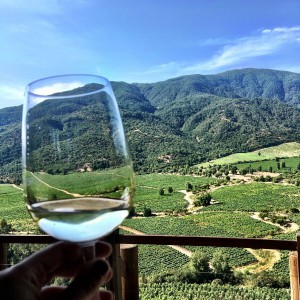


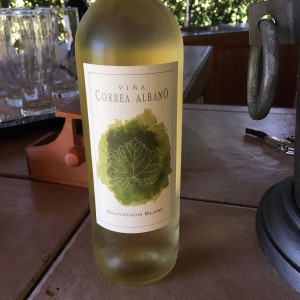
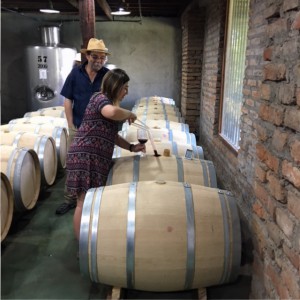
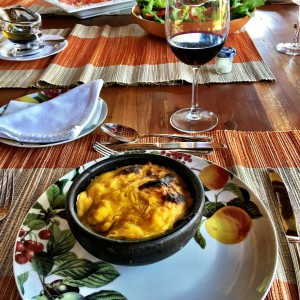

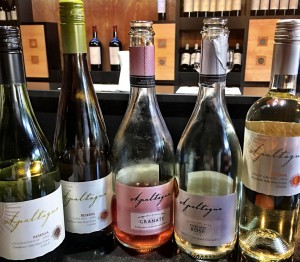
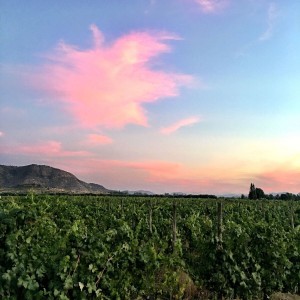



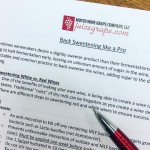

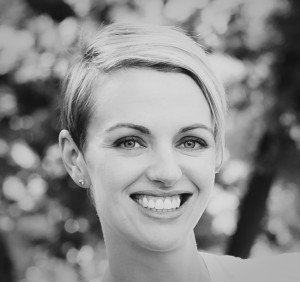
Recent Comments